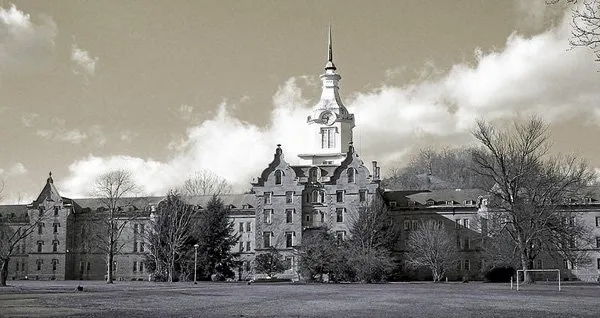In New York City’s forgotten borough, ghosts have the opportunity to thrive.

NEW YORK (TND) — Staten Island may be New York City’s forgotten borough, but its ghosts insist on being remembered. They’re a particularly loud bunch, from the former patients still strolling the halls of an abandoned tuberculosis sanatorium to a young Revolutionary War-era percussionist who’s spent nearly three centuries drumming in a church cemetery. Their message: “Come to Staten Island; it’s far more interesting than you think.”
Now, I’m like others in the city, in that when given the choice between a destination I can walk to from my apartment and one that requires a subway, a boat, and a bus or two to reach, I will choose the former every single time. But after enough tales of spectral soldiers gliding through deteriorating walls into a once-operational military fort since reclaimed by nature, I found myself on a ferry bound for a borough I’ve stepped foot on fewer than five times during my decade of living in Brooklyn.
Actually, the last time I went to Staten Island was also in pursuit of ghosts, when some poor planning allowed me only enough time to visit the Conference House, the site of a servant girl’s murder (which may or may not have actually happened) and the subsequent haunting by said servant girl (which I saw no evidence of). As the darkness began to spook me without even needing the help of the supernatural, I decided to abandon my intention to head over to the Historic Old Bermuda Inn and the nearby tugboat graveyard in the Arthur Kill waterway.
Both the inn and the marine scrapyard were on my list this year, along with nine other spots where spirits are said to spend time.
An ambitious plan for a single day, to be sure, but narrowing down my proposed route any further felt impossible. Staten Island is, for some reason, especially haunted, although I couldn’t tell you why. Yet as uninformative as my Google search for “Why is Staten Island so haunted?” was (it suggested “Why is Staten Island so hated?” as an alternative, to which there is no shortage of results), the mere fact that listicles of the borough’s most haunted places often include over a dozen entries says plenty.
And so, beckoned by the plethora of spirits that join under half a million people in calling the least populous borough home, I set off on the Staten Island Ferry to face a fear shared by many a New Yorker — the uncharted expanse of essentially suburbia that lies just beyond the 5.2-mile boat ride from Manhattan.
By area, Staten Island is bigger than both Manhattan and the Bronx. My approach to the day, then, was based entirely on the ease of getting around the subway-free island.
That landed me at the Alice Austen House Museum — closest on my list to the St. George Ferry Terminal and with somewhat limited hours — well before opening. My hunt would be restricted to the grounds, but could relinquishing my chance to view the works of the pioneering female photographer who once lived at the Hylan Boulevard address actually increase the probability of seeing ghosts, who aren’t known to like crowds anyway? I sure hoped so.
Its alleged incorporeal inhabitants range from a broken-hearted British soldier who hung himself from the dining room’s rafters to the spirits of enslaved Africans who lived there in the 18th century and can be heard rattling chains in the basement to this day.
By the time the Austen family purchased the farmhouse in 1844, the Revolutionary War-era ghosts were comfortably settled into their permanent residence. Alice Austen herself believed the Victorian Gothic cottage was haunted, but the presence of spectral roommates didn’t dissuade her from remaining in her childhood home throughout the majority of her adulthood.
If Austen had been permitted to stay until death in the house she called Clear Comfort, perhaps her soul could have rested in peace. But life wasn’t so kind. In 1945, after the Great Depression had decimated every last bit of Austen’s inherited wealth, the photographer and her longtime partner Gertrude Tate were evicted from the house. Tate went to live with her family, who did not approve of her relationship with Austen; Austen went to a poorhouse.
Only in the afterlife was Austen able to return to Clear Comfort, where she’s now believed to have joined the ghosts that once haunted her. She mostly keeps to herself, so long as the caretaker of the house chats with her once in a while (otherwise, she’ll knock her photographs off of the walls).





































